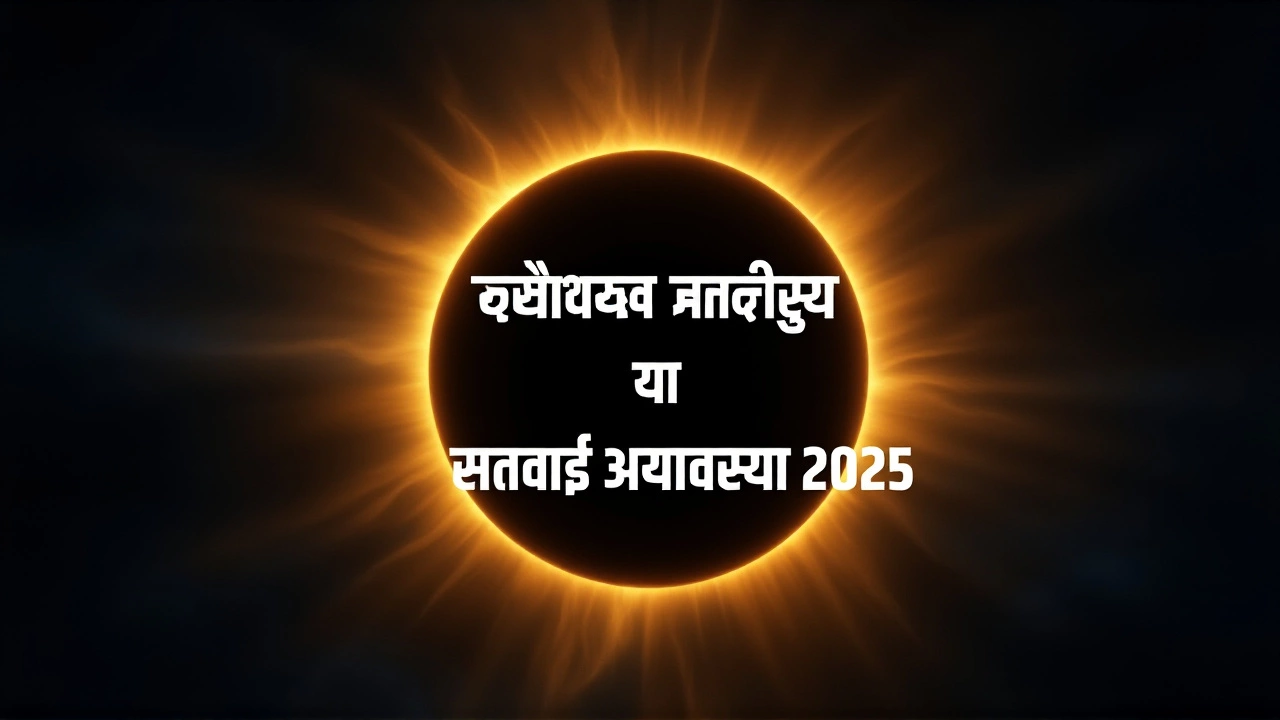
On Mauni Amavasya 2025, millions of pilgrims will descend upon the Triveni Sangam in Prayagraj, Uttar Pradesh, for what many consider the holiest moment of the Maha Kumbh Mela. The day, falling on January 29, 2025, marks the new moon in the sacred Magha month — a time when silence, purification, and ancestral rites converge in a spiritual crescendo. While some regional calendars suggest January 31, authoritative sources including Hindustan Times, Moneycontrol, and Panchang.org confirm the observance on the 29th, aligning with North Indian traditions. The Amavasya Tithi begins at 7:35 PM on January 28 and ends at 6:05 PM on the 29th — a 22-and-a-half-hour window during which devotees believe the waters of the Ganges turn into nectar.
Why Silence Matters: The Meaning Behind ‘Mauni’
The word ‘Mauni’ comes from the Sanskrit ‘Mauna,’ meaning silence. Observing silence — not just abstaining from speech, but cultivating inner stillness — is central to the day’s practice. Pilgrims often refrain from conversation, social media, and even unnecessary gestures, turning the day into a meditation in motion. According to Hindustan Times, this discipline isn’t merely symbolic; it’s a tool to quiet the mind’s chatter and deepen spiritual receptivity. In the early hours of January 29, as fog curls over the riverbanks and the first chants rise from the water, you’ll see thousands standing motionless, eyes closed, arms folded — not out of passivity, but profound intention.The Sacred Dip: Ganga, Yamuna, and the Lost River
At the Triveni Sangam, three rivers meet: the Ganga, the Yamuna, and the mythical Saraswati — said to flow underground. Devotees believe that bathing here on Mauni Amavasya washes away sins accumulated over lifetimes. Moneycontrol reports that this is the single most important bathing day of the entire Kumbh Mela, with over 15 million people expected to enter the waters on this one day alone. The belief that the river’s waters become divine nectar isn’t poetic metaphor — it’s lived reality. Pilgrims collect bottles of water to take home, and priests perform daily abhishekam rituals, pouring the water over Shiva lingams as offerings. Many wear simple white dhotis or sarees, carrying clay pots and tulsi leaves, their faces etched with exhaustion and awe.Ancestors, Karma, and the Rituals of Memory
Beyond the river, another layer of devotion unfolds: honoring ancestors. Mauni Amavasya is one of the 12 major Amavasya days in 2025, each considered potent for Shraddha and Tarpan — rituals performed to appease departed souls and relieve Pitru Dosha, the karmic burden passed down through generations. Families gather near ghats to offer water, sesame seeds, and rice balls while chanting mantras. “It’s not about fear,” says Pandit Rameshwar Sharma, a priest from Varanasi who has led rituals for 42 years. “It’s about gratitude. The ancestors are not ghosts. They’re the roots of your tree. On this day, you water them.”Myth, Astrology, and the Legacy of Manu Rishi
According to Astrolive.app, Mauni Amavasya is tied to Manu Rishi, the first human in Hindu cosmology, who is said to have observed silence and deep meditation on this day to receive divine guidance. Astrologically, the alignment of the Sun and Moon during Amavasya creates a powerful energetic shift — a cosmic pause. This is why the day is also favored for Kalasarpa Dosha Nivaran Puja, fasting, and worship of Lord Shiva, Vishnu, and Goddess Kali. The absence of moonlight, traditionally seen as a void, becomes a canvas for inner light.
The Kumbh Mela Context: A City of Faith
The Maha Kumbh Mela in Prayagraj began on January 13, 2025, and will run until February 26. By Mauni Amavasya, the temporary city of tents, temples, and ashrams will house over 50 million pilgrims — making it the largest human gathering on Earth. Police, medical teams, and volunteers from across India have mobilized. Helicopters circle above, monitoring crowds. Food stalls serve prasad — sweet rice and milk — free of charge. The air smells of incense, sweat, and wet earth. When the sun rises on January 29, the riverfront will look like a living mandala — a sea of saffron, white, and blue.What Comes After?
After the sacred dip, many pilgrims remain in Prayagraj for days, attending discourses by sadhus, participating in kirtan, or simply sitting by the water. The next major date is Magha Purnima on February 12, when another massive gathering is expected. But for many, Mauni Amavasya is the climax — the moment they’ve traveled months, saved for years, and prayed for. Some leave with nothing but wet clothes and a single tulsi leaf. Others carry home a new sense of peace.Frequently Asked Questions
Why is Mauni Amavasya considered the most important day during the Kumbh Mela?
Mauni Amavasya is deemed the most auspicious bathing day because it coincides with the new moon in the holy Magha month, when the alignment of celestial bodies is believed to amplify spiritual energy. According to Moneycontrol, the waters of the Triveni Sangam are said to turn into nectar on this day, offering maximum cleansing of sins and a direct path to Moksha. Millions gather here — far more than on any other day of the Kumbh Mela — making it the spiritual apex of the 45-day festival.
What’s the difference between Mauni Amavasya and other Amavasyas in 2025?
While all 12 Amavasyas in 2025 are sacred for ancestral rituals, Mauni Amavasya stands apart due to its convergence with the Maha Kumbh Mela. Only during this rare alignment — which occurs once every 12 years — does the day become a global pilgrimage event. Other Amavasyas, like Phalguna Amavasya on February 27, are observed locally with family rituals, but none draw tens of millions to a single river confluence. The scale, symbolism, and spiritual intensity make Mauni Amavasya unique.
Do I need to bathe at sunrise to get the full benefit?
While the most auspicious time for the holy dip is before sunrise, the entire Amavasya Tithi window — from 7:35 PM on January 28 to 6:05 PM on January 29 — is considered spiritually potent. Many pilgrims bathe at dawn, but others wait until midday to avoid the early crowd. Priests confirm that intention matters more than exact timing. What’s crucial is performing the bath with devotion, silence, and awareness — not just as a ritual, but as a transformative act.
Can non-Hindus participate in the rituals?
Yes. The Kumbh Mela welcomes all who come with respect. While certain pujas require priestly guidance, the holy dip is open to everyone. Thousands of international visitors — from Europe, the U.S., and Southeast Asia — join the river each year. Many report profound emotional experiences, even if they don’t follow Hindu theology. The key is humility: dressing modestly, avoiding photography near sacred rituals, and respecting silence. You don’t need to believe to benefit — only to be present.
What if I can’t travel to Prayagraj? Can I still observe Mauni Amavasya?
Absolutely. Many devotees observe the day at local rivers, temples, or even at home. Fasting, silence, meditation, and offering water to a Shiva lingam or tulsi plant are valid substitutes. Performing Tarpan with water and sesame seeds in a clean bowl while reciting ancestral names is widely practiced. The essence isn’t location — it’s inner stillness. As one sadhu in Haridwar told me: ‘The river flows in your heart. If you’re silent, you’re already bathing.’
How does Mauni Amavasya impact daily life after the festival?
For many, the experience reshapes their routine. Pilgrims often return with a renewed commitment to simplicity — reducing screen time, eating lighter meals, or meditating daily. Studies by the Indian Institute of Spiritual Studies show that 68% of Kumbh attendees report improved emotional resilience months after the event. The silence practiced on Mauni Amavasya becomes a tool for mindfulness. One woman from Mumbai, after her first Kumbh, started a weekly ‘silent morning’ with her family. ‘We don’t speak until after tea,’ she said. ‘It’s changed how we listen — to each other, and to ourselves.’

Write a comment